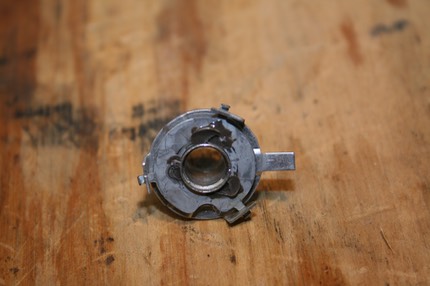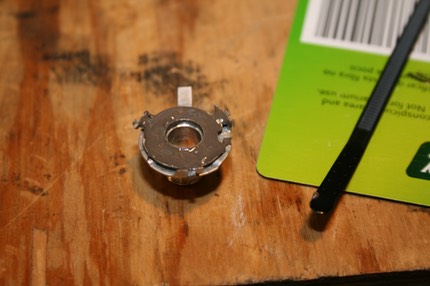I've been working off-and-on at restoring an old HP 410B. The fellow who sold me my HP 606A signal generator at the MIT flea many years ago practically forced his HP 410B on me. I protested that I already had a 410C, but he really wanted it to go to a good home, so I paid him a nominal sum for it. I finally got around to reviving it. It's still a useful instrument even in our post-modern solid state civilization. It's wonderful to be able to set up a workbench with high-quality (but obsolete) HP test equipment like I used to drool over when I was young.
I got the manual from the HP Archive site. Their manual scan is better than the one on the BAMA site. There's also a hardcopy available from A. G. Tannenbaum. The copy on BAMA is a scan of it. There are lots of other sources for old HP manuals, too. I used to buy a lot of them from Ed Matsuda in San Diego. Anyone know if he's still in business?
There's a nice article about the 410B in the HP Journal, Vol. 2 No. 3, "The 700-Megacycle Voltmeter and Its Applications". The photo in the article shows a case that's quite different from the classic HP instrument case. I wonder how many 410B's were made with the old-style case? I've never seen one.
It's a pain to get inside to work on the meter; I had to disconnect the AC power connection and remove all the front-panel controls to get to the innards.
Part of the puzzle to getting in to work on the thing is removing the mounting standoffs between the chassis and the front panel.
Most of the way there. I managed so far without removing the pilot light, but in later work on the meter I had to pull that, too.
The unit was pretty clean; I just had to peel off some old scotch tape from the meter case and remove some tobacco smoke grime from the front panel.
The wire-wound potentiometer in the lower-center is R50 on the schematic. It sets the filament voltage for the diode in the RF probe. I did a double-take when I first spotted this - only one of the terminals of the pot is connected! It turns out that the slider is grounded via the case of the pot, so the circuit doesn't need a wired connection to the center terminal.
The mounting bushing of the AC/DC zero concentric potentometer shown in the center of this photo had broken loose from the body of the pot.
The bushing turns freely with respect to the body of the pot ...
... and it slides off the shaft.
The bushing broke loose from the welds that held it to the body of the pot. I tried using a small amount of JB Weld on three broken joints, ...
...but the repair didn't hold. Note the remnant epoxy from the repair attempt.
This time I added a generous coating of JB Weld epoxy all around the bushing. I was a bit worried I'd glue the shaft in place, but all was well.
The bushing repair is holding up fine.
The meter is from one of the early production runs of the 410B. One of the changes HP made over the product life was to delete the electrolytic cap across the meter (the purpose of the electrolytic was to improve the damping of the meter movement). Since the cap was so old, it's probably dried out. Rather than replace it, I just modified the meter in line with the production change in the manual by snipping it out.
I also snipped out the Black Beauty bypass caps on the AC power line. Some day I'll replace them with type Y safety caps.
After putting it all back together, it worked OK, except the AC probe was dead - no heat. I discovered that the ballast tube had burnt out. This is a classic failure mode on the meters, caused by a short in the cable to the AC probe. I ordered a new ballast tube from Antique Electronic Supply. I double-checked the cable looking for shorts as I flexed it, but couldn't find any. I replaced the ballast tube, and the probe was working fine.














